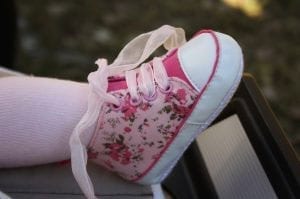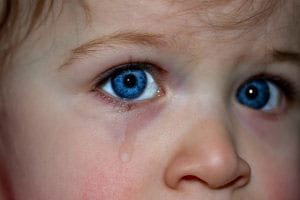Asher Camp is five years old. His parents, Amanda and Jeremy, had two daughters before Asher. That’s why when Asher progressed differently, they knew to be concerned. After quick action, and medical attention, the Camp family learned that their son had type 1 spinal muscular atrophy. Now, while Asher and his family live with his condition, his mother has begun doing advocacy work. Keep reading to learn more about their story, or follow the original source here for additional information.
What is Spinal Muscular Atrophy?
Spinal muscular atrophy is a rare genetic disorder. It affects roughly 1 in every 10,000 people. Spinal muscular atrophy causes various degrees of muscle weakness and degeneration and may be more or less severe depending on the type of spinal muscular atrophy and the age of the person living with it.
Type 1 spinal muscular atrophy (also known as Werdnig-Hoffman disease) is one of the more severe forms. It is often diagnosed soon after birth. Type 1 spinal muscular atrophy often causes developmental delays, an inability to sit, and an inability to support the head independently. Other symptoms may include difficulty breathing or swallowing.
Click here to learn more about spinal muscular atrophy.
Sheer Luck
The Camp family eventually settled in Lakeland. They had no idea at the time that it was the best place they could be for their son. It was “sheer luck” says Amanda that the local Nemours Children’s Hospital in Orlando was a testing site for an experimental treatment.
Nusinersen was an unapproved, experimental drug at the time. Early on, the family felt the anxieties associated with going into the unknown and placing their son in an experimental trial. Most children with spinal muscular atrophy, however, don’t live past the age of two. Asher became the youngest person in the world to be treated with the experimental drug which would later become Spinraza.
“We’re Groundbreaking”
“Everyday we live in a place almost of disbelief,” says Amanda. Living with spinal muscular atrophy brings a lot of different stresses. If Asher were born six months earlier, for example, or if they had lived somewhere else, the outcome could have been very different. “Living life with SMA,” says Amanda “never looked like this before.”
Amanda has also been pursuing advocacy since Asher’s diagnosis. This allows her to meet other families living in similar situations, and support those raising children, and those who have lost children to spinal muscular atrophy. She even stays involved through a regularly updated Facebook page called “Arms for Asher.”
A Balancing Act
Asher’s parents describe the way they keep up with Asher’s changing abilities as a balancing act. While Asher often looks healthy to outsiders, his family knows he’s quite fragile. Asher only weighs 32 pounds.
Amanda describes how many people react to Asher by feeling sorry for him. They want to do everything for him. Asher, she says, despite appearances, wants to play and “push every limit that is put in front of him.”
One of the continuing difficulties the Camp family faces is keeping up with equipment. Asher never had a power wheelchair until one was recently approved. This will allow him to spend more time out and socializing with other children which has previously been difficult for him due to a lack of muscle tone. Asher also utilizes a Standing Dani to keep him upright and stretch his tendons so he is not always sitting.
“We’re just living out the experiment,” says Amanda. While his prognosis is currently good, the future is unclear even as much as five years from now. A lot of potential treatments could soon become available but only time and further tests will tell.






